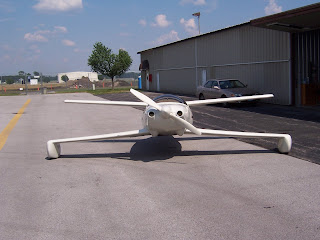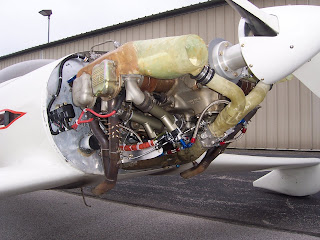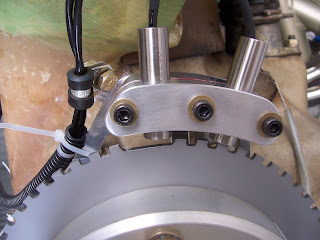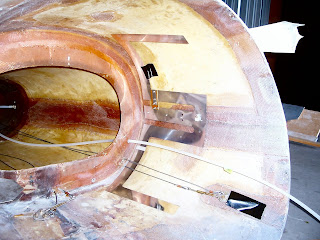It would be fine during takeoff, climb, cruise, etc., but the engine would badly miss when I went over 2,900. Was it the electronic ignition? A bad coil? Problems with fuel delivery? Since these systems are interwoven I wasn't sure where to start.
I thought I had already conquered the case of the vibrating sensor mounting bracket but in the back of my mind, the miss felt familiar. Since I had already beefed up the assembly, I didn't know what I could to do to make it better and I didn't want to spend a lot of effort there if I didn't know that was the problem.
I decided to shoot Lynn French an e-mail and ask for a gigantic favor. If I flew to Broken Bow Nebraska, would he consent to swapping parts - again? Fortunately, Lynn is very generous and he went along with the plan.
On the way to Broken Bow I stopped in Topeka to see my daughter and grand-kids, so I did get some great non-aviation time, too.
While I was en-route, I tried going to WOT a couple of times and each time the miss was back.
I arrived at the Broken Bow airport about 10:00, Lynn arranged a nice hangar to work in and parts started flying off the planes. We set them up nose-to nose and installed Lynn's bracket bracket and trigger wheel. Rob Martinson brought doughnuts from Colorado in his newly rebuilt Long-Eze, and took a look at our electronic ignition set-ups.
 Here is Lynn's current set up:
Here is Lynn's current set up:
Fortunately, it was a simple swap. I didn't have to change the timing or anything, and I used my sensors. We just changed the trigger wheel and mounting bracket. After a quick test on the ground, everything seemed well. I told Lynn that I would take it up and see how it was, that if it performed well I would just fly on home. (just kidding).
Here are Lynn's parts mounted in my buggy:

So, I went up for the test hop and what do you know? The engine performed just fine, smooth as a baby's butt. At WOT the engine was perfectly smooth and no hint of a miss. Problem diagnosed. It was somewhere in my trigger wheel mounting bracket setup and I'm pretty sure it was a vibration issue creating electronic noise in the sensors.
Got back on the ground and we put the parts in their proper places, and left the airport just as the sun was setting.
On top of all that, Lynn was nice enough to boot one of his boys out of his room and give me a bed to sleep in. Great guy.
One screwy thing, I tried another in-flight WOT on the way home and the miss was gone. This is not completely surprising, since it had previously behaved on occasion. I think my mounting system is just on the edge of performing/not performing, and when we swapped the parts I may have set it in a more reliable position.
Here is a photo of my view of Nebraska on the way back to Topeka:

Having said all that, I still need to work out a more reliable system. I have several options and I'll mull the whole thing over, before I come up with my final direction.
Thanks again, Lynn.













































